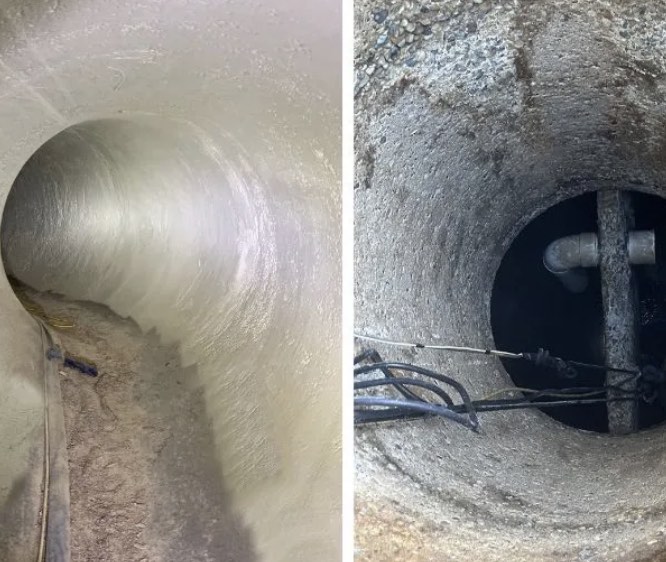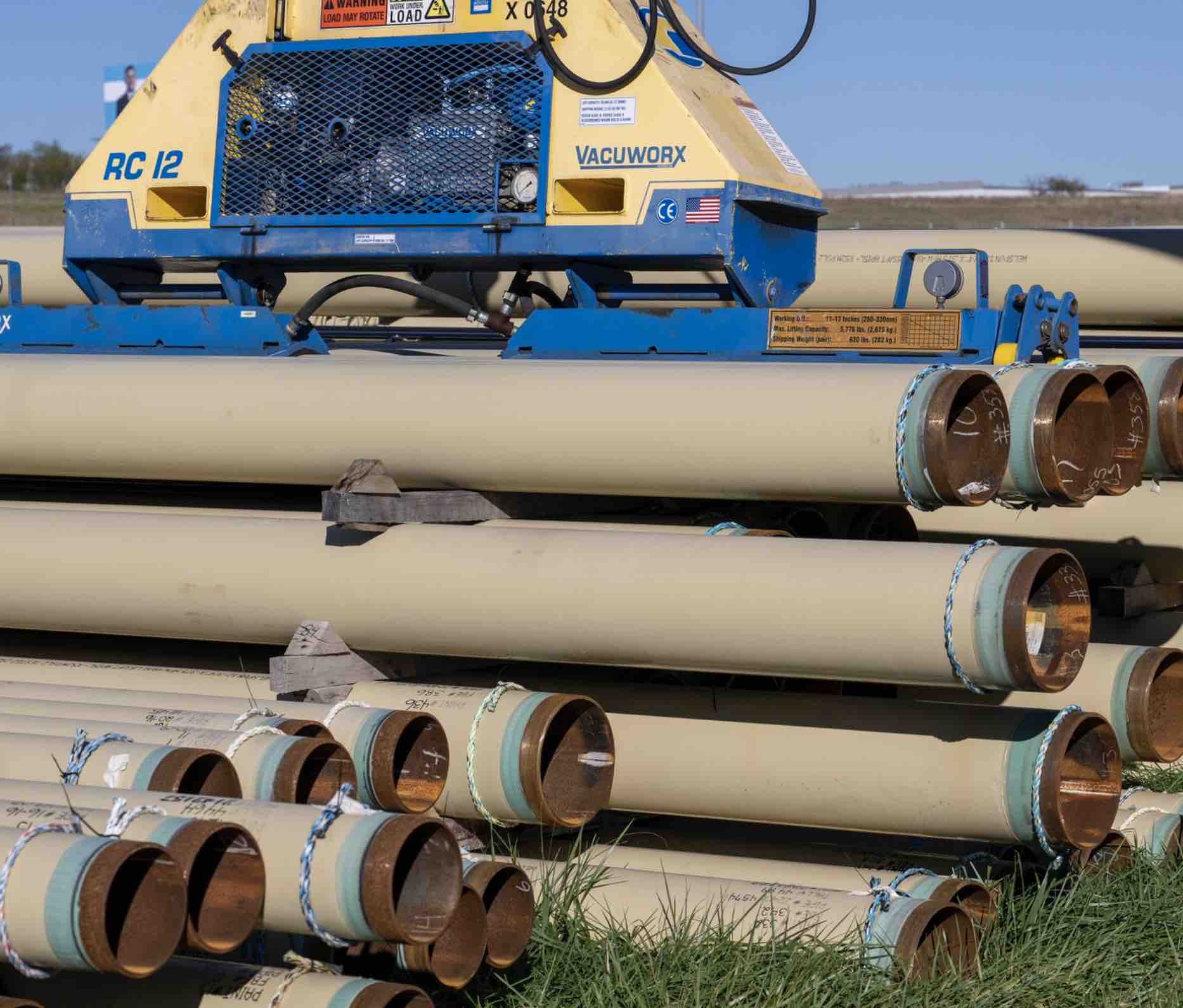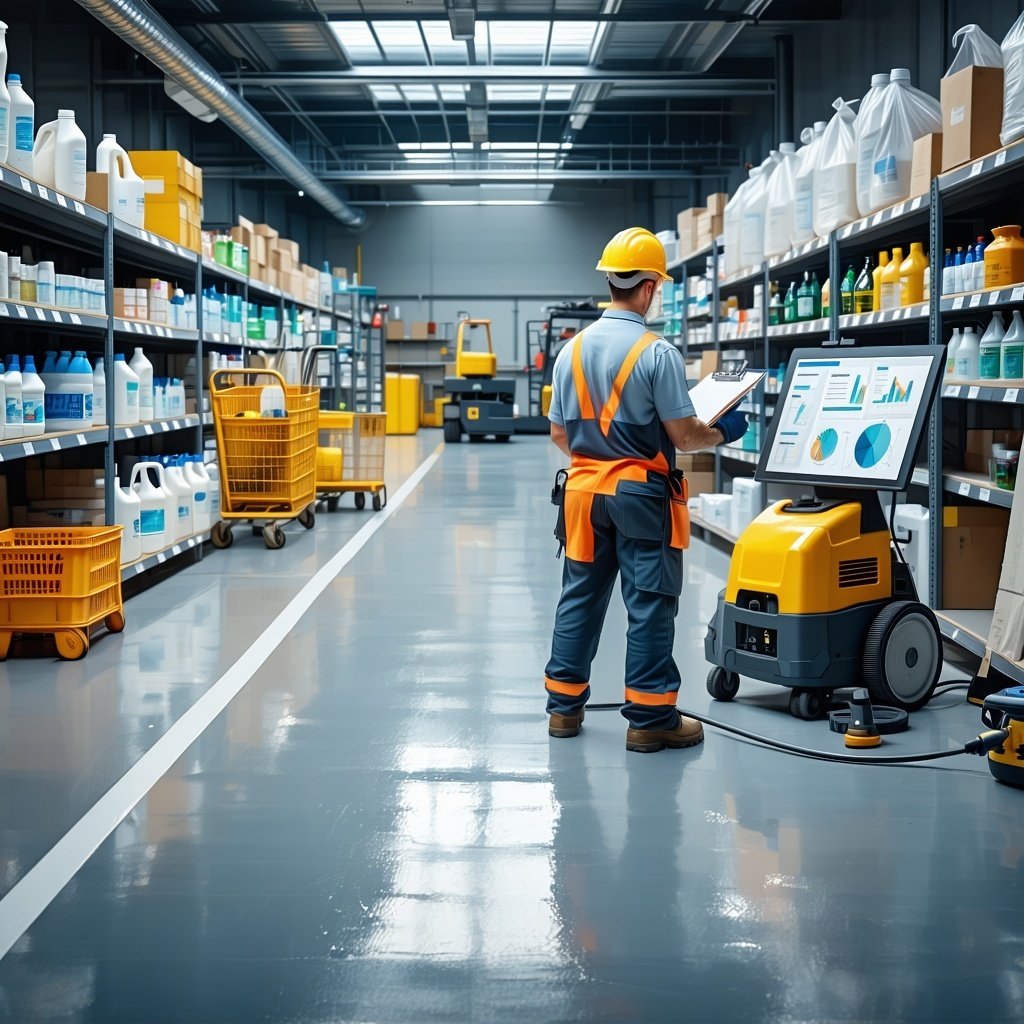
SIPP Technology: Pipeline Rehabilitation Done Insitu
Sprayed in Place Pipe (SIPP) technology represents one of the most innovative approaches to pipeline rehabilitation extending the life of deteriorating infrastructure.
- High Performance Coatings
Sprayed in Place Pipe (SIPP) technology represents one of the most innovative approaches to pipeline rehabilitation.
SIPP Technology: A Solution for Pipeline Rehabilitation
Aging wastewater collection systems face mounting challenges as decades-old infrastructure deteriorates, leading to infiltration and inflow issues, structural failures, and costly emergency repairs. Municipal operators and utility managers are increasingly turning to innovative rehabilitation technologies that can restore system integrity without the massive disruption and expense of traditional dig-and-replace methods. Sprayed in Place Pipe (SIPP) technology has emerged as a game-changing solution specifically designed to address the unique challenges of wastewater collection system rehabilitation.
What is SIPP in Wastewater Applications?
Sprayed in Place Pipe (SIPP) is a trenchless rehabilitation method that creates a new corrosion-resistant pipe within existing deteriorating sewer lines by applying a structural coating directly to the interior walls of the host pipe. This technology is particularly valuable for wastewater applications where pipes are subjected to hydrogen sulfide corrosion, root intrusion, joint infiltration, and the aggressive chemical environment typical of sewer systems.
The process transforms deteriorated sewer pipes into like-new conduits with smooth interior surfaces that resist corrosion and biological growth. Unlike excavation-based replacement that can disrupt traffic, damage landscaping, and require costly restoration, SIPP rehabilitation is performed entirely from within the existing pipe through strategically located manholes.
Addressing Critical Wastewater Collection Challenges
Wastewater collection systems face unique operational challenges that make SIPP technology particularly valuable:
Hydrogen Sulfide Corrosion Sewer gases, particularly hydrogen sulfide, create highly corrosive conditions that attack concrete and metal pipes. SIPP coatings provide a chemical-resistant barrier that protects the host pipe from further acid attack and extends service life significantly.
Infiltration and Inflow Reduction Cracked joints and deteriorated pipe walls allow groundwater to enter the collection system, overwhelming treatment capacity during wet weather. SIPP creates a seamless interior lining that dramatically reduces I&I, improving system capacity and reducing treatment costs.
Root Intrusion Prevention Tree roots naturally seek out moisture and nutrients found in sewer lines, causing blockages and structural damage. The smooth, jointless interior created by SIPP eliminates root entry points and provides a surface that roots cannot easily penetrate.
Flow Capacity Restoration Years of buildup, corrosion, and structural deterioration reduce pipe capacity. SIPP not only halts further deterioration but actually improves hydraulic characteristics, often restoring or exceeding original design flow rates.
The SIPP Installation Process for Sewer Systems
The SIPP installation process for wastewater applications follows specialized protocols designed to handle the unique challenges of sewer environments:
Step 1: System Assessment and Bypass Planning Comprehensive CCTV inspection identifies problem areas, structural defects, and service connections. Flow bypass systems are designed to maintain sewer service during rehabilitation, ensuring no disruption to customers.
Step 2: Pre-Cleaning and Preparation High-pressure water jetting removes accumulated debris, grease, scale, and root masses. Specialized root cutting equipment addresses severe intrusions, while chemical cleaning may be used for stubborn deposits typical in sewer environments.
Step 3: Bypass Installation and Flow Diversion Temporary bypass pumping systems divert wastewater flow around the work area, allowing safe access for rehabilitation crews while maintaining system operation.
Step 4: Final Surface Preparation mechanical cleaning (sandblasting, high pressure water-jetting, etc.) ensures optimal surface conditions for coating adhesion. Special attention is paid to service connections and areas of severe corrosion common in wastewater applications.
Step 5: Spray Application Robotic spray equipment specifically designed for sewer applications travels through the pipe, applying the coating material in controlled layers. The system accommodates service laterals and maintains precise thickness control throughout varying pipe conditions.
Step 6: Service Connection Restoration Service laterals are carefully reopened using specialized cutting equipment, ensuring proper connection between main lines and service pipes without compromising the integrity of the spray lining.
Step 7: Curing and Quality Verification The coating cures under controlled conditions while bypass systems maintain service. Final CCTV inspection verifies complete coverage, proper lateral connections, and overall quality before system restoration.
Step 8: System Restoration and Testing Bypass systems are removed, normal flow is restored, and the rehabilitated system undergoes final testing to ensure proper operation and improved performance.
SIPP vs. CIPP in Wastewater Applications
When comparing rehabilitation options for wastewater collection systems, understanding the differences between SIPP and CIPP is crucial for making informed decisions:
Complementary Applications While SIPP and CIPP are often viewed as competing technologies, they can work together effectively in comprehensive rehabilitation strategies. A particularly effective approach combines CIPP for long straight pipe runs with SIPP for bends, connections, and complex geometries. CIPP excels in straight sections where the liner can be easily installed and provides excellent structural reinforcement over extended distances. However, CIPP installations can be challenging at pipe bends, direction changes, and areas with multiple service connections where the liner may not conform properly or could create flow restrictions. SIPP technology is ideally suited for these complex geometries, as the spray application can uniformly coat irregular surfaces, tight bends, and junction areas that would be difficult to address with traditional CIPP methods. This hybrid approach maximizes the strengths of both technologies within a single rehabilitation project.
Chemical Resistance in Sewer Environments Wastewater systems generate aggressive chemicals, particularly sulfuric acid from hydrogen sulfide oxidation. SIPP coatings, especially advanced formulations, provide superior chemical resistance compared to many CIPP materials, offering better long-term protection against acid attack.
Service Lateral Accommodation Sewer systems typically have numerous service connections that must remain functional after rehabilitation. SIPP application allows for precise control around laterals, while CIPP installations require careful cutting and sealing of service connections after curing, which can create potential failure points.
Flow Capacity Considerations In wastewater applications where maintaining maximum hydraulic capacity is critical, SIPP's thinner application (typically 3-6mm) preserves more internal diameter compared to CIPP liners (often 6-15mm thick). This difference can be crucial in systems already operating near capacity.
Installation Flexibility Wastewater systems often have challenging access conditions, varying pipe materials, and complex geometries. SIPP can accommodate these conditions more easily than CIPP, which requires specific installation conditions and may have limitations with severe pipe deformation.
Root Resistance The seamless, smooth surface created by SIPP provides excellent resistance to root re-intrusion, a critical consideration in sewer applications. While CIPP also creates a smooth surface, the application method of SIPP often results in better coverage of irregular surfaces where roots typically establish.
Epoxytec CPP: Engineered for Wastewater Environments
Epoxytec CPP (Centrifugally cast Polyurethane Pipe) represents the state-of-the-art in SIPP technology specifically formulated to excel in wastewater collection environments. This advanced polyurethane system addresses the unique challenges sewer systems present:
Exceptional Chemical Resistance Epoxytec CPP demonstrates outstanding resistance to sulfuric acid, the primary corrosive agent in wastewater systems. Laboratory testing shows minimal degradation even under accelerated exposure conditions that simulate decades of service in aggressive sewer environments.
Superior Adhesion to Common Sewer Materials Wastewater collection systems utilize various pipe materials including carbon steel, concrete, cast iron, and PVC. Epoxytec CPP bonds exceptionally well to all these substrates, creating a monolithic rehabilitation that performs as an integral part of the pipe system.
Biological Resistance The smooth, non-porous surface of cured Epoxytec CPP resists biological growth and biofilm formation, maintaining hydraulic efficiency and reducing maintenance requirements common in wastewater applications.
Flexibility and Durability The polyurethane chemistry provides excellent flexibility to accommodate ground movement and thermal cycling while maintaining structural integrity. This flexibility is particularly important in wastewater systems where differential settlement and temperature variations are common.
Proven Performance Record Epoxytec CPP has demonstrated excellent long-term performance in challenging wastewater applications, with installations showing continued effectiveness after decades of service in some of the most corrosive sewer environments.
Wastewater-Specific Applications and Benefits
SIPP technology using Epoxytec CPP is particularly valuable for these wastewater collection system challenges:
Gravity Sewer Main Rehabilitation Deteriorated gravity mains benefit significantly from SIPP rehabilitation, which restores structural integrity while improving flow characteristics and eliminating infiltration sources.
Force Main Protection Pressure sewer systems face unique corrosive conditions. SIPP provides internal protection while maintaining full flow capacity critical for pressure system operation.
Pump Station Wet Well Restoration The chemical-resistant properties of SIPP make it ideal for protecting pump station wet wells from the highly corrosive conditions typical of these facilities.
Interceptor Sewer Rehabilitation Large-diameter interceptors carrying concentrated wastewater loads benefit from SIPP's ability to provide uniform protection while accommodating the complex geometries typical of these critical system components.
Manhole Rehabilitation Integration SIPP projects can be coordinated with manhole rehabilitation efforts, providing comprehensive system restoration that addresses both pipe and structure deterioration.
Economic and Operational Advantages
The economic benefits of SIPP in wastewater applications extend well beyond initial installation costs:
Reduced Emergency Repairs By addressing deterioration proactively, SIPP eliminates costly emergency repairs and service disruptions that can damage utility relationships with customers and regulatory agencies.
Treatment Plant Capacity Optimization Reducing infiltration and inflow through SIPP rehabilitation helps optimize treatment plant capacity, potentially deferring expensive plant expansions while improving treatment efficiency.
Regulatory Compliance SIPP rehabilitation helps utilities maintain compliance with consent decrees and regulatory requirements by reducing overflows and improving system reliability.
Asset Management Integration SIPP extends asset life cost-effectively, supporting comprehensive asset management strategies that balance capital investment with operational requirements.
Environmental and Community Benefits
Wastewater collection system rehabilitation using SIPP provides significant environmental and community advantages:
Reduced Environmental Impact By eliminating the need for excavation, SIPP dramatically reduces the environmental footprint of rehabilitation projects while protecting sensitive areas from construction disturbance.
Community Disruption Minimization Trenchless rehabilitation maintains normal traffic flow, preserves landscaping, and eliminates the noise and dust associated with traditional construction methods.
Groundwater Protection Sealing deteriorated pipes prevents wastewater leakage that can contaminate groundwater resources, protecting public health and environmental quality.
Future Considerations for Wastewater System Management
As wastewater collection systems continue to age and environmental regulations become more stringent, technologies like SIPP will play an increasingly critical role in sustainable infrastructure management. The combination of performance, cost-effectiveness, and minimal disruption makes SIPP an essential tool for proactive system management.
Advanced products like Epoxytec CPP represent the continued evolution of rehabilitation technology, providing enhanced performance characteristics specifically designed for the challenging conditions found in wastewater collection systems. The integration of these technologies with comprehensive asset management strategies enables utilities to maintain system reliability while managing capital resources effectively.
Conclusion
SIPP technology, particularly when implemented with advanced products like Epoxytec CPP, offers wastewater utility managers a proven, cost-effective solution for addressing the critical challenges facing aging collection systems. The technology's ability to restore structural integrity, eliminate infiltration and inflow, prevent root intrusion, and improve hydraulic performance makes it an invaluable tool for maintaining system reliability.
The minimal disruption, proven performance, and long-term durability of SIPP rehabilitation provide utilities with a practical approach to asset management that addresses immediate operational needs while supporting long-term sustainability goals. As the wastewater industry continues to face the dual challenges of aging infrastructure and increasing regulatory requirements, SIPP technology represents a mature, reliable solution that delivers measurable results for collection system rehabilitation.
LET OUR KNOWLEDGE AND EXPERTISE HELP ENSURE YOUR NEXT PROJECT IS SUCCESSFUL

ARO Coatings: The Key to Pipe Protection
How do ARO coatings compare to standard pipe...

What Maintenance is Required with High...

What Is The Role of High Performance Coatings in...
High performance coatings have transformed the...